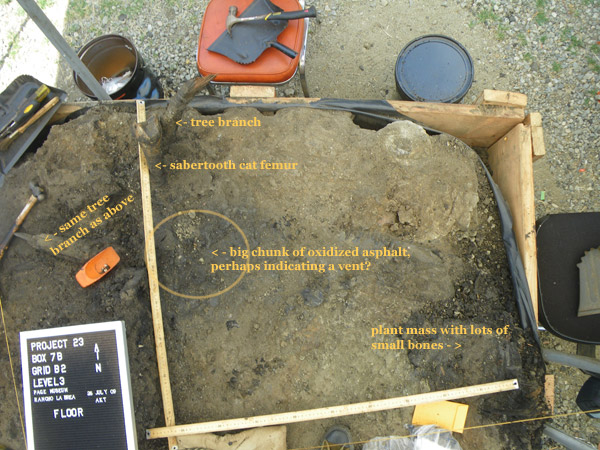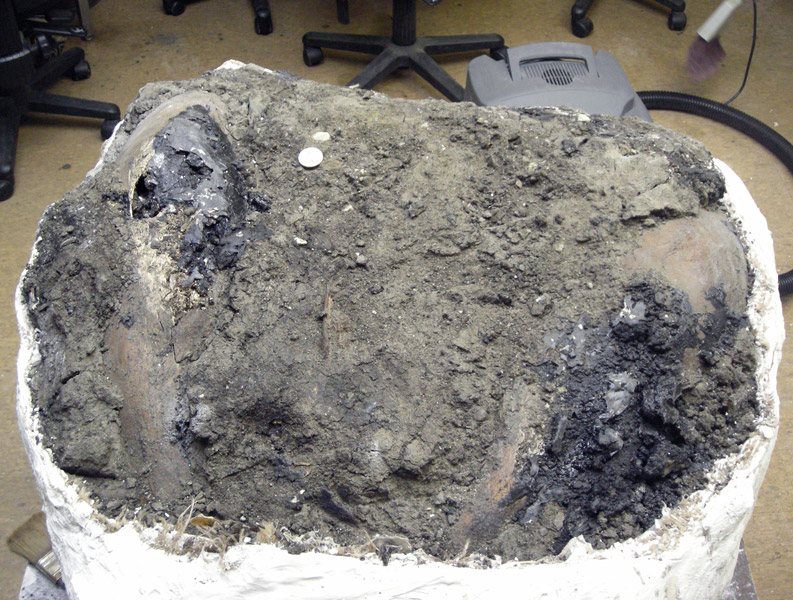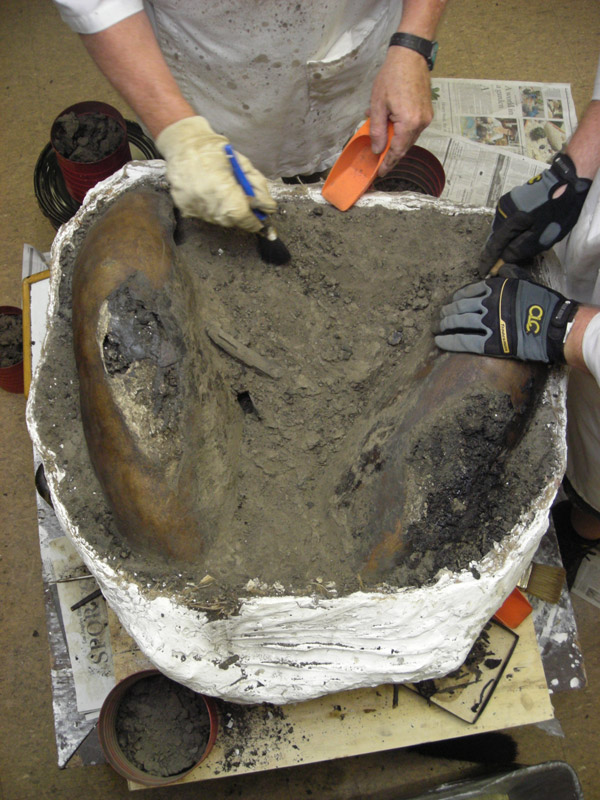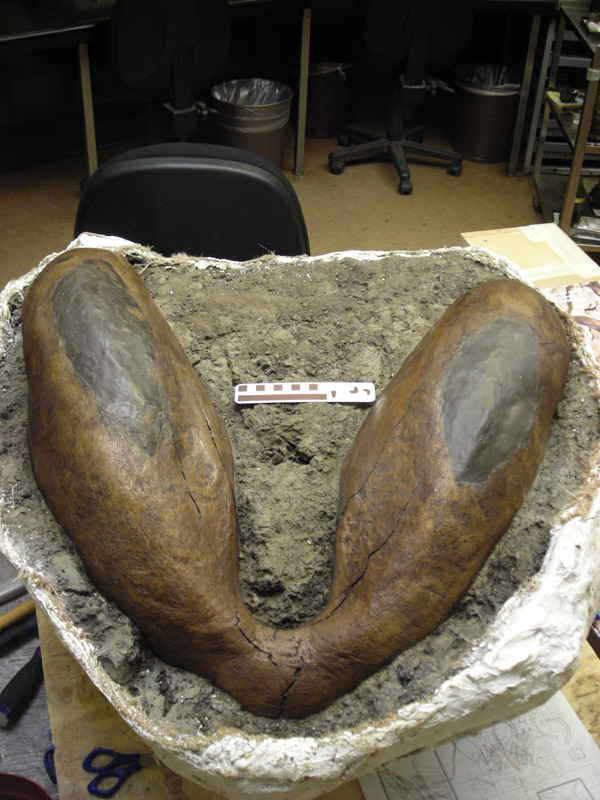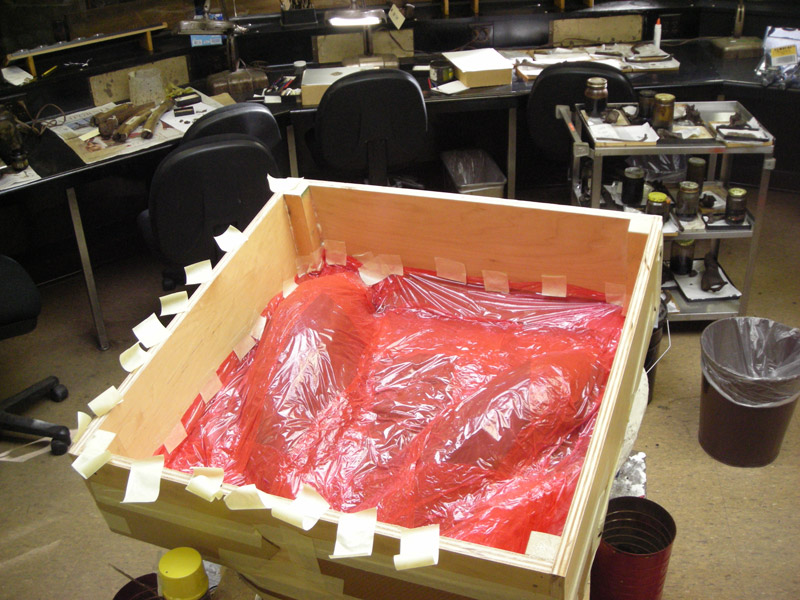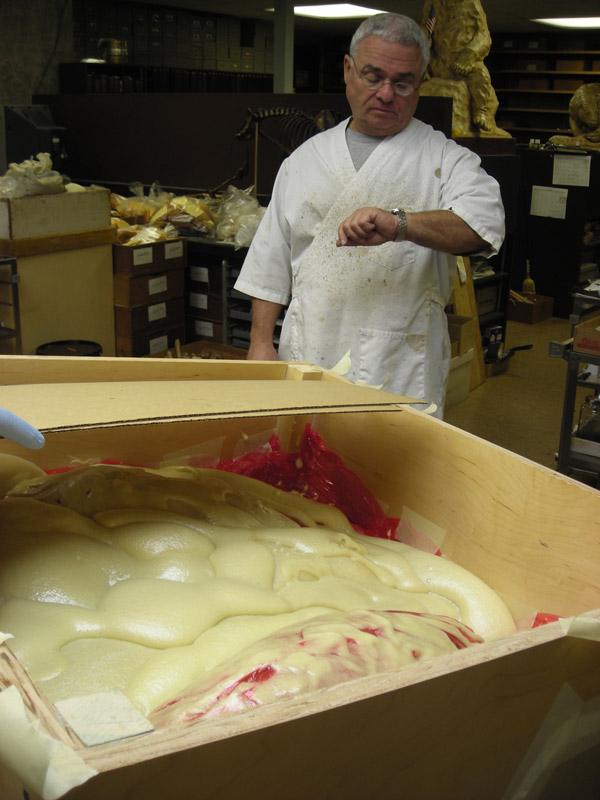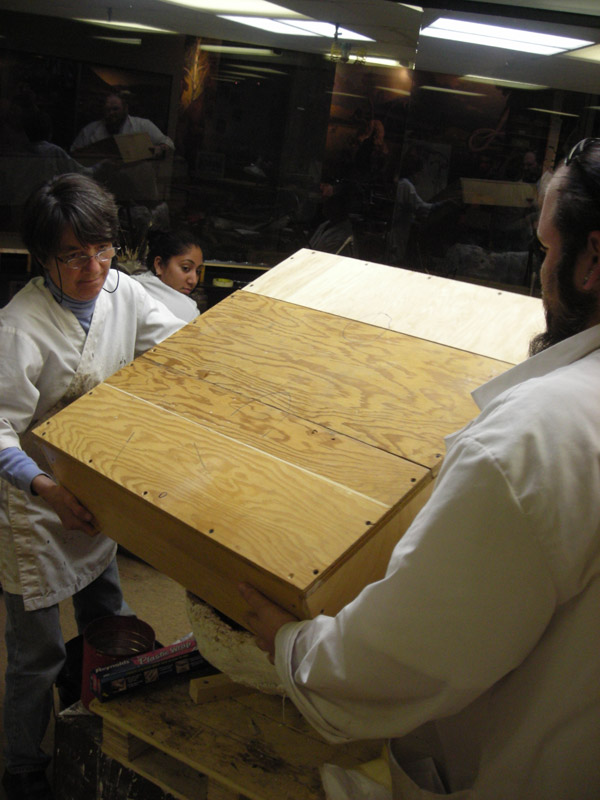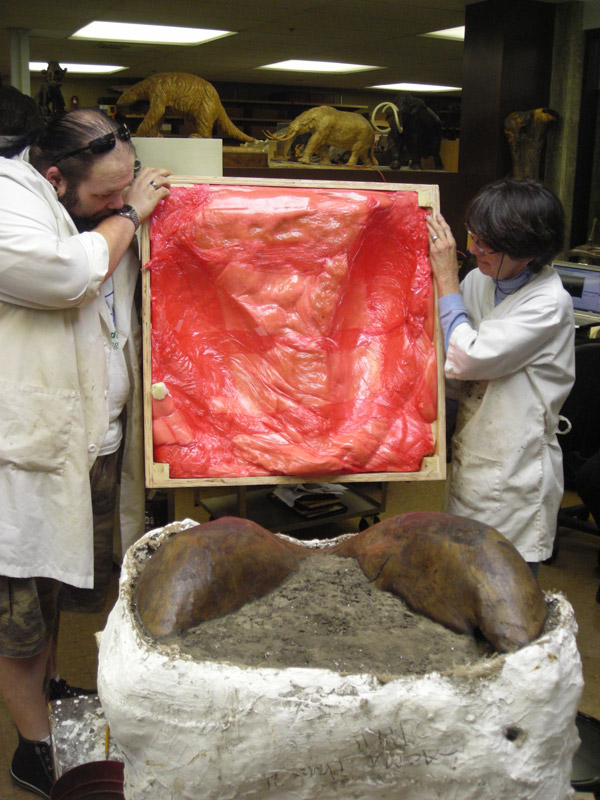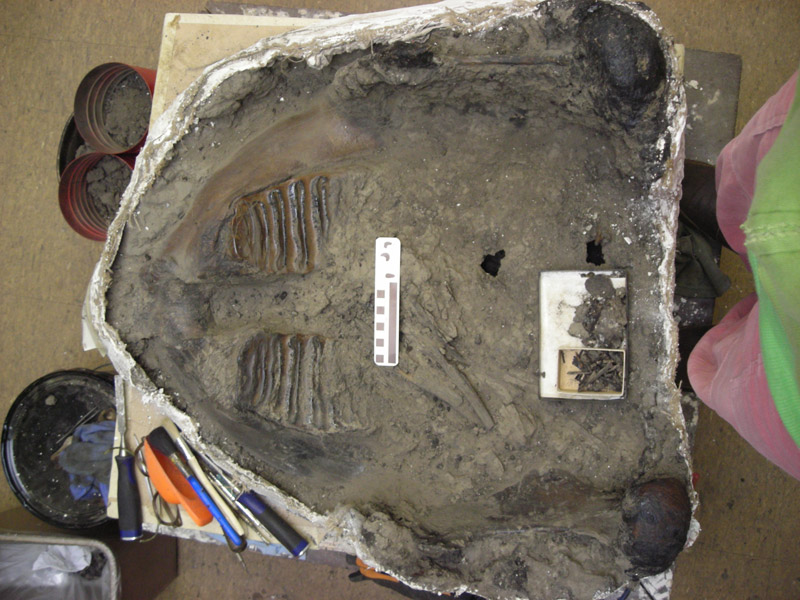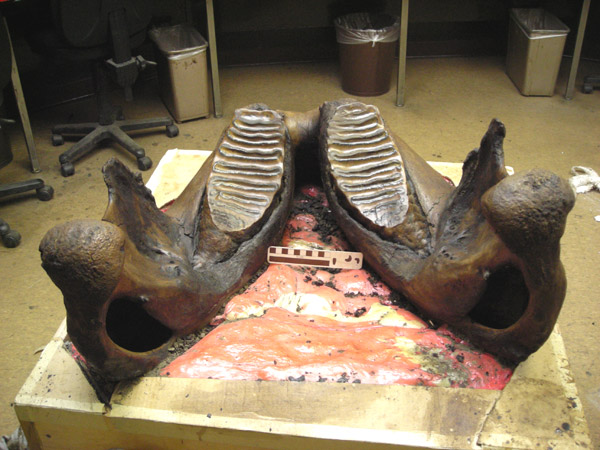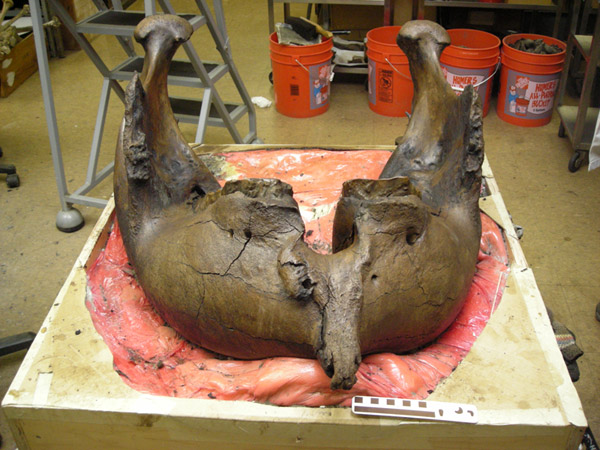Hey, we're on tv! Again! Video below features Dr. John Harris & Trevor Valle speaking, and Carrie Howard, Meena Madan, and Tara Thara excavating (and Aisling Farrell and myself for approx 2 seconds a piece, which is perfectly a-ok, because being on tv is scary). "Best of LA," check it out (email subscribers -- I think you'll have to click through to actual blog to view, sorry):
25 April 2010
project 23 on 'best of la'
28 July 2009
With Ryan gone, life is much daintier here at Rancho La Brea.
However, this does not mean that we are not still capable of great feats of strength:

once, this was a chisel. now, it is rubble. such is life.
as is evidenced by the still-growing pile of broken tools left in our wake (volunteer Meena broke this one...)
Thus, over the last week our girlie muscles have brought Deposit 7B down almost a meter below its original grade. 7B is small, and not densely fossiliferous, but nevertheless productive enough to stay interesting:
The femur is the latest of several sabertoothed cat bones we've excavated from this area (including a skull!), and we're wondering if they're all from the same individual animal. We won't know for sure until they're cleaned and officially identified by the folks in the lab.
Less immediately exciting, but still important: there's a huge chunk of rock hard oxidized asphalt right in the middle of the deposit. There are bones around this asphalt, but not in it. We think this might be a vent -- the fissure in the ground that the asphalt originally oozed up from! We've seen this in Pit 91 before, but haven't been able to observe it as well as now. We only worked in Pit 91 for 12 weeks out of the year, and would only excavate a fraction of the exposed grids each season. This means that though interesting geological features were documented, it would sometimes take years to see if they continued another foot below the surface -- just because it took us that long to excavate the entire floor. Working year round with smaller deposits is allowing us to focus on unexpected geologic/taphonomic environments like this one.
I mentioned the lab earlier, and soon we'll have a proper Update From Indoors but until then:
here's a soundtrack-less time lapse of the preparation of Zed's right femur. Still a work in progress, but you get the general idea. Email subscribers: visit excavatrix.blogspot.com to see the video. Or scroll down: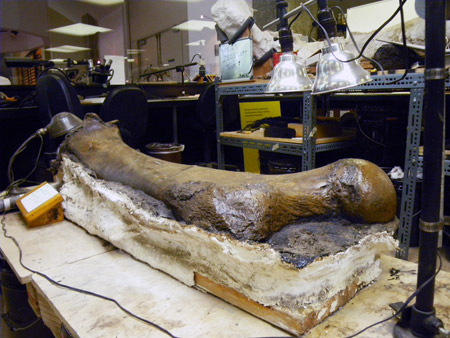
to see Zed's femur in it's shiny, well polished glory.
That's it for now, more later!
30 December 2008
meanwhile, back in the lab (part II)
When Shelley & Co. were about halfway done preparing Zed the Mammoth's thoracic vertebrae, they decided to open another plaster jacket: jacket #4, Zed's mandible! Their reasons were thus:
1) mammoth jaw means mammoth teeth. And mammoth teeth are excellent at revealing age. We already knew that Zed was fairly old when he died -- he's huge, for one thing, and there's evidence of arthritis on a number of his ribs, for another -- but we didn't know how old. Elephant tooth replacement occurs in very specific patterns, at very specific ages. They go through a total of 6 sets of molars in their lifetime, each molar slowly wearing down and getting pushed out by the one behind it. By comparing Zed's tooth wear to that of an African elephant, we can make a fairly accurate estimation of his age at death.
2) we have two extremely delicate mammoth tusks awaiting preparation. Working on Zed's similar-but-sturdier molars first may allow us to prepare for the tusks' preparation.
3) a very nice field producer from a very entertaining television show asked Shelley very politely to pretty please let them film the opening of the mammoth jaw jacket -- Shelley acquiesced. More on this when the time is right... [editor's note: oops, looks like I'm wrong. It was the thoracic vertebrae jacket that was opened on camera -- not the mandible jacket. Guess the field producer wasn't quite nice enough...]
Long story short: jacket number 4, containing mammoth mandible, was opened. And it looked like this:
Yuck! We were saddened to discover that a) the jaw is upside-down (no visible teeth means we must wait to learn Zed's true age!) and b) a tractor shaved off the bottom-most edges of the jaw, leaving what we in the business euphemistically call "discovery marks."
As you can see, Zed's matrix (the dirt surrounding the fossil)is primarily dusty brown clay -- not the dark, sticky asphaltic sand we find in Pit 91. This is good and bad -- good: it's easy to dig through; bad: it's dusty and dry. Dry means there's less asphalt in Zed's skeleton over-all; his bones may be a bit more fragile than many others found at Rancho La Brea. Shelley therefore decided to repair the bottom of Zed's jaw, giving it a solid base to rest on and preventing further damage. After the bottom half was cleaned and ready to flip, the jaw was built up with gray putty:
And a wooden base was constructed around it:
That pink stuff is cellophane. That wooden box is about to be filled with expanding foam, which will create a perfectly customized cradle for the jaw to rest it. The cellophane -- in addition to being quite fetching -- will keep the foam from sticking to bone.
Trevor assisting on the left, Shelley pouring on the right. The foam is created by mixing two separate fluids together, and waiting:
Look! It's Herb, waiting patiently! Herb is awesome; he volunteers here, and at the LA Zoo, and with the Dinosaur Institute at the LA Natural History Museum. He's basically enmeshed with every natural history organization in the greater Los Angeles area. I think he's trying to take over.
Anyway: the foam! It rises, like bread, but far less tasty:
Trevor shaved the few errant remnants, and then:
Yay! It's done! What a beautiful mandible base! The jaw itself was then very carefully turned, and placed into the base. Trevor removed another layer of plaster, and soon enough, Zed's molars finally revealed themselves.
Zed's on his last set of molars -- a pair of M3's. Mammoth teeth are similar to elephants in that they're made up of a series of undulating plates. These teeth erupt one after another, almost continuously throughout their lifetimes, and plates are worn down from front to back. Based on the amount of wear on Zed's teeth, Shelley estimates Zed's age at 47 years (+/- 2). Zed wasn't ancient, but he definitely would have qualified for AARP membership.
If mammoths lived as long as African elephants live now -- up to 60 years -- then Zed could have had another decade in him, had an asphalt seep not caused his tragic end. However, Zed's jaw contains a rather unexpected hint at what kind of life Zed would have lived. Look at the front of the jaw, between his molars, where his tongue would have rested:
That weird, drippy growth is pathological -- that is, it's not normal. While mammoths typically do have a kind of "spout" in that area -- sometimes it angles down, sometimes it points straight out -- they don't have the weird, bumpy, lopsided growth that Zed shows here. But here's the thing -- yeah, we know that growth is pathological. But just because it's weird doesn't mean it's necessarily uncommon. We have far fewer mammoths in our collection than we spoiled Rancho La Breans are used to dealing with -- 30-32, compared to thousands of dire wolves. And we have even fewer pieces of mammoth jaw. There are approximately five mammoth mandibles in our collection in which that particular feature (the mandibular symphysis) is more or less intact -- and certainly none anywhere as complete as Zed's. So it's hard to say if this growth is unusual or not. Who knows -- many mammoth mouths could have been lopsided and bumpy like Zed's. We won't know until we find more mammoths. All the more reason to keep digging.
But here's the other thing: several of Zed's other bones have pathological elements to them -- arthritic joints, broken and re-healed ribs. It's looking more and more as if Zed lived a pretty rough life. In fact, the latest jacket Shelley and Trevor opened -- just last week! -- contains another hint at Zed's life. But more on that next week. Or rather, next year. Whatever -- Happy new year!
23 December 2008
meanwhile, back in the lab (part I)...
As temperatures turn colder, it's time for The Excavatrix to turn attention to warmer, more indoor activities -- such as the preparation of mammoth fossils in the lab (not that we excavators aren't still stuck outside... come rain, sleet, snow and hail, excavation marches on...). Lab Supervisor Shelley, her assistant Trevor, and our wonderfully dedicated volunteers have been hard at work on two of the plaster jackets from Zed, our semi-articulated Columbian mammoth.
The first jacket they cracked open: Jacket #91, labeled "mid-vert column." This jacket contains seven of Zed's thoracic vertebra -- a portion of his spine that connects with his ribs. In fact, you can see part of one of the ribs in the photo below, immediately above our scale/quarter.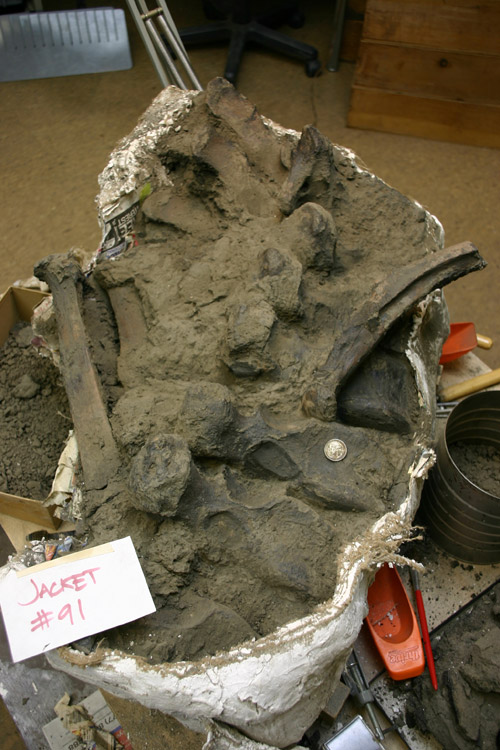
The proximal ends (the portions closest to the spinal column) of two ribs were encased in this jacket along with Zed's vertebra. And niftily enough, we were able to reunite both ribs with their missing halves: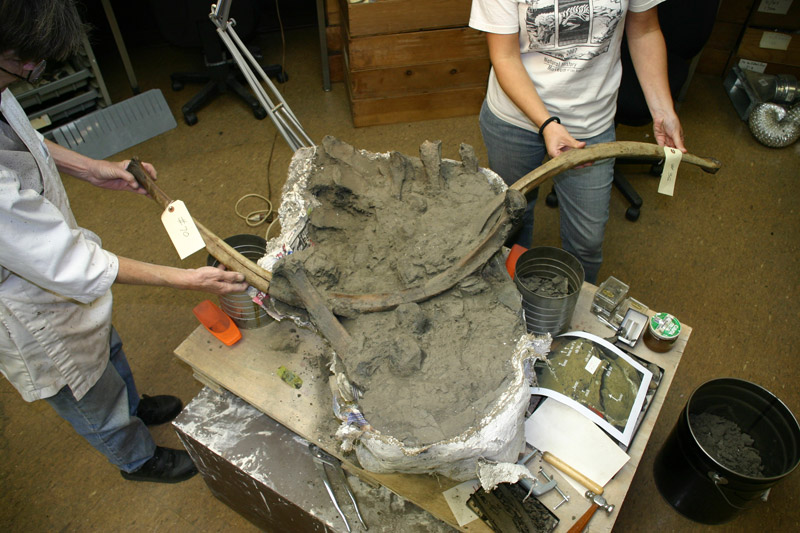
We're always thrilled when we can actually put these paleontological puzzles back together with a minimum of sturm und drang. There are millions of specimens in our collection, and that's not including the bones that have been cleaned but not yet catalogued. The longer we wait to reunite fossils with their broken bits, the more likely it is that the reunion will never happen. In this case, both ribs were deliberately broken in order to make the jacket smaller and more stable, and thus allowing it to protect the vertebrae all the better -- a fairly common practice in paleontological salvage and recovery. However, in many cases, fossils are broken either by the act of deposition itself -- bones collide with other bones and break into bits -- or by accident, during excavation. Asphalt is hard, and mistakes are unfortunately made! These 23 fossil blocks are particularly difficult digging; Deposit 1 in particular is practically cement. So the sooner we can put the bone back together, the better.
Anyway, back to Zed's spine. This particular assemblage is a great example of what we mean when we say "semi-articulated." The photo below is a close-up of one of Zed's thoracic vertebra, and the rib that was found immediately next to it. These two bones would have been articulated, or jointed in life. However, their positions shifted slightly after Zed's tragic end. The two semi-circles would have been joined together in life, but now they're a bit misaligned. Hence, semi-articulated. 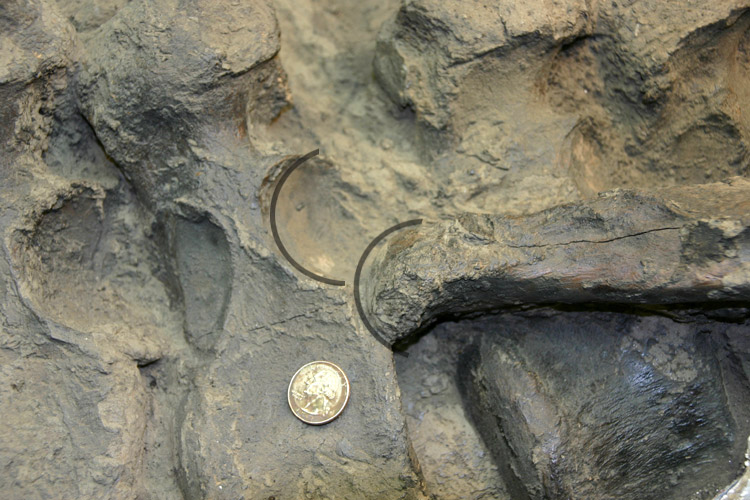
Eventually these ribs were removed to allow Shelley et al to finish cleaning the vertebrae. And finished product looks like this: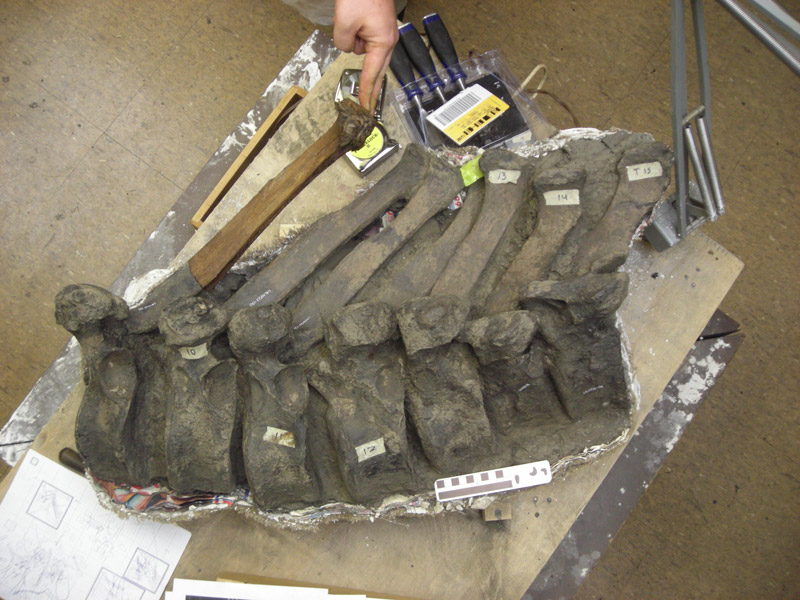
Lovely! This jacket is now on display in the museum, by the fishbowl laboratory! Please, drop by, say hello, check it out. More on lab activities next week, holiday schedules permitting.

